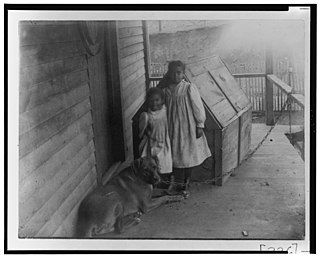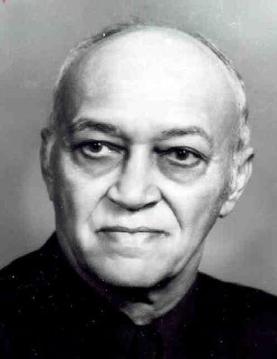
Texas is the most populous state in the South Central region of the United States. It borders Louisiana to the east, Arkansas to the northeast, Oklahoma to the north, New Mexico to the west, and the Mexican states of Chihuahua, Coahuila, Nuevo León, and Tamaulipas to the south and southwest. Texas has a coastline on the Gulf of Mexico to the southeast. Covering 268,596 square miles (695,660 km2), and with over 30 million residents as of 2023, it is the second-largest U.S. state by both area and population.

Juneteenth is a federal holiday in the United States commemorating the ending of slavery in the United States. Its name is a portmanteau of the words "June" and "nineteenth", as it is celebrated on the anniversary of June 19, 1865, when Major General Gordon Granger ordered the final enforcement of the Emancipation Proclamation in Texas at the end of the American Civil War. Originating in Galveston, Juneteenth has since been observed annually in various parts of the United States, often broadly celebrating African-American culture.

Bexar County is a county in the U.S. state of Texas. It is in South Texas and its county seat is San Antonio.
Estevanico, also known as Esteban de Dorantes and Estevanico the Moor, was the first person of African descent to explore North America. Little is known about his background but contemporary accounts described him as a "negro alárabe" or "Arabic-speaking black man" native to Azemmour, Morocco. In 1522, he was sold as a slave to the Spanish nobleman Andrés Dorantes de Carranza in the Portuguese-controlled Moroccan town of Azemmour.

Slavery in the Spanish American colonies was an economic and social institution which existed throughout the Spanish Empire including Spain itself. Indigenous peoples were enslaved and their populations decimated. Subsequently enslaved Africans were brought over. Native people were also subjected to forced conversions and conscription.
Indigenous people lived in what is now Texas more than 10,000 years ago, as evidenced by the discovery of the remains of prehistoric Leanderthal Lady. In 1519, the arrival of the first Spanish conquistadors in the region of North America now known as Texas found the region occupied by numerous Native American tribes. The name Texas derives from táyshaʼ, a word in the Caddoan language of the Hasinai, which means "friends" or "allies." In the recorded history of what is now the U.S. state of Texas, all or parts of Texas have been claimed by six countries: France, Spain, Mexico, the Republic of Texas, the Confederacy during the Civil War, and the United States of America.

In the U.S. state of Texas, Houston is the largest city by both population and area. With a 1850 United States census population of 2,396—and 596,163 a century later, in 1950—Houston's population has experienced positive growth trends. In 2000, the city had a population of 1,953,631 people in 717,945 households and 457,330 families, increasing to 2,304,580 at the 2020 census.
According to the U.S. Census Bureau, as of 2023, Texas was the second largest state in population after California, with a population of 30,503,301, an increase of more than 1.3 million people, or 4.7%, since the 29,145,505 of the 2020 census. Its apportioned population in 2020 was 29,183,290. Since the beginning of the 21st century, the state of Texas has experienced strong population growth. Texas has many major cities and metropolitan areas, along with many towns and rural areas. Much of the population is concentrated in the major cities of Dallas–Fort Worth, Austin, San Antonio, Houston, McAllen, and El Paso and their corresponding metropolitan areas. The first four aforementioned main urban centers are also referred to as the Texas Triangle megaregion.

The history of slavery in Texas began slowly at first during the first few phases in Texas' history. Texas was a colonial territory, then part of Mexico, later Republic in 1836, and U.S. state in 1845. The use of slavery expanded in the mid-nineteenth century as White American settlers, primarily from the Southeastern United States, crossed the Sabine River and brought enslaved people with them. Slavery was present in Spanish America and Mexico prior to the arrival of American settlers, but it was not highly developed, and the Spanish did not rely on it for labor during their years in Spanish Texas.

The following outline is provided as an overview of and topical guide to Texas:

William Madison McDonald, nicknamed "Gooseneck Bill", was an African-American politician, businessman, and banker of great influence in Texas during the late nineteenth century. Part of the Black and Tan faction, by 1892 he was elected to the Republican Party of Texas's state executive committee, as temporary chairman in 1896, and as permanent state chairman in 1898.
Hispanic and Latino Texans are residents of the state of Texas who are of Hispanic or Latino ancestry. As of the 2020 U.S. Census, Hispanics and Latinos of any race were 39.3% of the state's population. Moreover, the U.S Census shows that the 2010 estimated Hispanic population in Texas was 9.7 million and increased to 11.4 million in 2020 with a 2,064,657 population jump from the 2010 Latino population estimate.

African-American Georgians are residents of the U.S. state of Georgia who are of African American ancestry. As of the 2010 U.S. Census, African Americans were 31.2% of the state's population. Georgia has the second largest African American population in the United States following Texas. Georgia also has a gullah community. African slaves were brought to Georgia during the slave trade.

African Americans in Florida or Black Floridians are residents of the state of Florida who are of African ancestry. As of the 2010 U.S. Census, African Americans were 16.6% of the state's population. The African-American presence in the peninsula extends as far back as the early 18th century, when African-American slaves escaped from slavery in Georgia into the swamps of the peninsula. Black slaves were brought to Florida by Spanish conquistadors.
Benjamin Franklin Williams (1819–1886) was a Methodist minister and Republican politician who served three terms in the Texas Legislature, served as a delegate to two Texas Constitutional Conventions, and helped found the freedmen's community of Kendleton.
Richard Allen was a carpenter, contractor, businessman and, after the Civil War, a Republican politician in Texas. He was elected to two terms in the Texas House of Representatives. In 1878, he was the first African American in Texas to run for statewide office, but was unsuccessful in his campaign for lieutenant governor.

Black Dixie: Afro-Texan History and Culture in Houston is a 1992 book edited by Howard Beeth and Cary D. Wintz and published by Texas A&M University Press. It is a collection of thirteen essays about the history of African-Americans in Houston. It was the first scholarly book to provide a comprehensive history of Houston's black community, and the book's dust jacket referred to it as the first such book of any city in the Southern United States.

John Mason Brewer was an American folklorist, scholar, and writer noted for his work on African-American folklore in Texas. He studied at Wiley College in Marshall, Texas, and Indiana University, while he taught at Samuel Huston College in Austin, Texas, Booker T. Washington High School in Dallas, Claflin College in Orangeburg, South Carolina, Texas Southern University in Houston, Livingstone College in Salisbury, North Carolina, and East Texas State University in Commerce, Texas. He published numerous collections of folklore and poetry, most notably The Word on the Brazos (1953), Aunt Dicey Tales (1956), Dog Ghosts and Other Texas Negro Folk Tales (1958), and Worser Days and Better Times (1965).
The African American population in San Antonio, Texas has been a significant part of the city's community since its founding. African Americans have been a part of the Greater San Antonio's history since the late 1800s. San Antonio ranks as the top Texas destination city for Black professionals.
Texans All is a series of books, organized by the Institute of Texan Cultures and published by the Texas A&M University Press, about the ethnic groups of Texas. They are titled: The African Texans by Alwyn Barr, The Asian Texans by Marilyn Dell Brady, The European Texans by Allan O. Kownslar, The Indian Texans by James M. Smallwood, and The Mexican Texans by Phyllis McKenzie. All were published in 2004.














